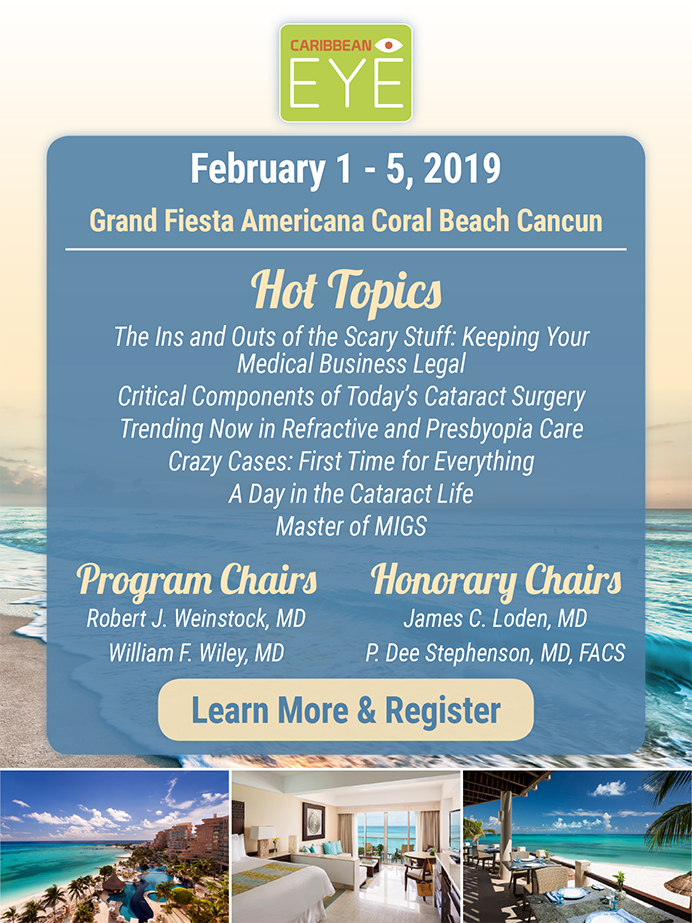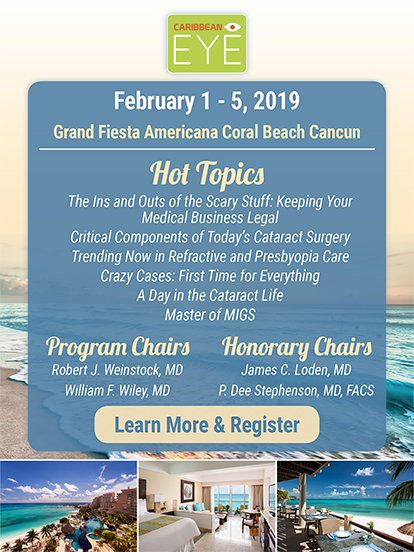Blake Williamson, MD, MPH, MS: The area where ODs and MDs collaborate the most may very well be cataract surgery. Innovations in the past few years have given patients a number of options, and the optometry practice is often the first place patients will encounter education on their femtosecond laser and IOL choices. Why do you feel it’s important to talk to your patients about these options before they get to the surgery?
Ann Shaw, OD, MS: Many patients are not aware of the advances in technology with cataract surgery. Patients commonly tell me that they know someone who had cataract surgery, and now that person wears glasses all the time. This is an opportunity to tell them about the different options that exist—that you can get your astigmatism corrected or you can get an IOL that allows you to see up close and far away.
Adam Pickle, OD: Sometimes when an OD encounters a patient with a cataract, the patient doesn’t even realize that they’re not seeing well because of a lens issue. They usually think they need new glasses. When you tell them that they have a cataract, they are sometimes frightened because they’re not really sure what that means. When you educate them that removal of the cataract is an opportunity to fix their vision so that they may not need to rely as heavily on glasses or contacts—or rely on them ever again—the fear they felt turns into excitement.
Mike Calhoun, OD: A majority of my patients are on Medicaid, and many of them only want something that is covered by their insurance plan.
Dr. Shaw: I have found that, too.
Dr. Williamson: Dr. Calhoun, how do you educate such patients about their options given the possible limitations? I feel every patient has a right to know how they could see after surgery, regardless of their financial situation.
Dr. Calhoun: When I tell the patient that they have cataracts and that their insurance can cover basic cataract surgery, they seem relieved. I tell them that, with basic cataract surgery, they will likely still need glasses, but they’ll see better through them and it will be a lighter prescription. I also tell them that the surgeon—in this case, Dr. Williamson—can provide other options, too, all of which may decrease their likelihood of needing glasses in the future.
Dr. Williamson: That’s important. You want to use language like “reduce the need,” and never use language like “permanently get you out of glasses.”
Dr. Shaw: I’ve had patients tell me, “My friend had cataract surgery and she never wears glasses.” At that point, I need to adjust their expectations.
Dr. Williamson: Right, because you don’t know what type of surgery their friend had, whether they had any corneal astigmatism, etc. right?
Dr. Shaw: Exactly. It’s important to stress that each patient is different, and that they have a lot of options on the table that may result in different outcomes.
Dr. Williamson: Let’s discuss nomenclature. Words matter in what we do. Even though the procedure is ultimately the same, there is a difference in the patient’s mind between “basic cataract surgery,” “standard cataract surgery,” and “traditional cataract surgery.” When people hear “standard cataract surgery” or “traditional cataract surgery,” they say to themselves, “Why would I want something other than the standard of care or the traditional method?”
Dr. Calhoun: I have personally been using the phrase “manual cataract surgery,” and I remind my patients that this is a tried and true procedure, and that Dr. Williamson has awesome hands. He has operated on both my mother and father which makes it easy for my patients to have confidence in his expertise.
Dr. Williamson: I tend to stick to the word “basic” myself, but each doctor should do whatever they have found is most effective and least confusing. I try to avoid “manual” in my practice, because if the patient hears about laser-assisted cataract surgery, they immediately think that it is superior to manual surgery, and I don’t want them to think that manual surgery is bad. We reassure that it is good, safe surgery and they’ll do well. We do let them know that with the femtosecond laser we can automate the most important steps of the procedure which makes them more precise, accurate, and reproducible. We also highlight that we can treat their astigmatism with laser.
Dr. Shaw: I try to stress that the primary difference is in the type of lens implant they may receive, not in the surgery itself. So there are “basic lenses” and “premium lenses,” but, when speaking with patients, no “basic surgery” or “premium surgery.”
Dr. Pickle: I agree with Dr. Shaw. I try to shy away from discussion of the surgery itself and instead focus on outcomes. I discuss the possible need for readers versus bifocals versus no bifocals after surgery is complete.
Dr. Williamson: What are the most effective mediums for communication? Often, it’s not what you tell patients, it’s what they remember. Sometimes having multiple touch points allows them to retain information about their options.
Dr. Pickle: I find that face-to-face interactions work best. Pamphlets supplement what I have to say, and when a patient reviews the pamphlet later, they are now hearing the information for a second time, and my message is really driven home.
Dr. Shaw: I actually show the patient an IOL. I show them how the device is clear, and explain that their own lens is cloudy. Once the patient sees the device that is going to be implanted, it is no longer abstract. They get it. And my patients really seem to like it. I also try to reassure them that they are in good hands with Dr. Williamson who will go over all of this at their evaluation. I let them know Dr. Williamson operated on my father’s cataract, which shows I have total confidence in his skills. I’ve found that when my patients have a better understanding of the procedure itself and who is performing the procedure, it puts their minds at ease.
Dr. Calhoun: I am 100% face-to-face. When I practiced in the Air Force, I used an eyeball model had a removable lens and a removable cornea and there was a cross section of the eye. That helped patients understand exactly what cataract surgery would entail.
Dr. Williamson: Interesting! I’ve been using the digital wall boards from Checked Up and have really enjoyed those. Last question, what are your patients most concerned about when you recommend cataract surgery and how do you address that?
Dr. Pickle: I think it’s the surgery itself and the recovery. Whenever you tell a patient that they need surgery, they really get nervous. Maybe they had a parent or a grandparent that they know who had surgery 30 years ago, and they know how difficult that recovery was. I like to reassure them about the technology that’s available today. I like to talk about the surgeon who I trust and that I’ve seen lots of Dr. Williamson’s patients and they do very well. This puts them at ease.
Dr. Shaw: I don’t want the patient to think that I’m just sending them off. I tell them that I plan to collaborate with the surgeon on their care and communicate with the surgeon, and that I will see them for follow-up appointments. And I detail when those follow-up appointments are: day 1, week 1, month 1, and maybe month 3, month 6, etc. I also stress that their eye is going to heal quickly, and that the surgeon will operate on only one eye at a time.
Dr. Calhoun: I say that nobody is going to pressure them into having surgery, since routine cataracts are usually not an emergency or painful. Many of my patients have no idea what to expect, so I give them an outline of the process and what to expect on surgery day. I reassure them that, although they will have bending and lifting restrictions for a couple of days, they can do most of the things they want pretty quickly after surgery. I also remind them that even if they need glasses after surgery, they should need them less often and have better overall vision.
Dr. Williamson: I want to thank this panel for taking time to participate in this important roundtable discussion. Modern cataract surgery is among the safest and is the most common surgical procedure performed today. We know over the next 20 years we will see enormous growth in cataract volume as well as continued innovation in what options patients have with technology. I believe collaborative care with ODs such as yourselves will provide the best solution to meet the demand for surgical services.









